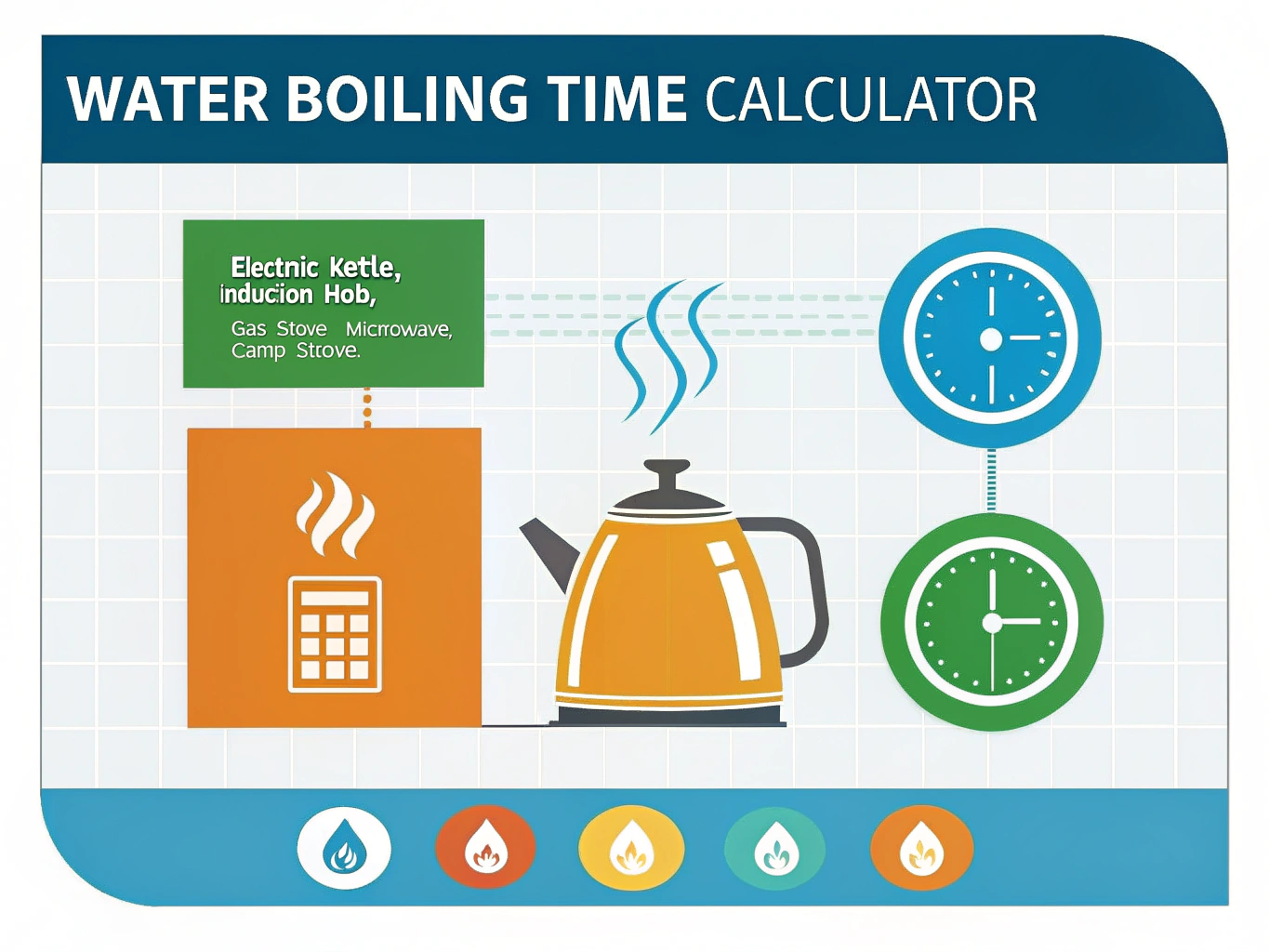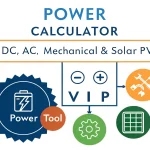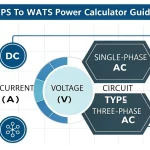Water Boiling Time Calculator
Calculate how long it takes to boil water based on volume, temperature, and heat source
Results
Boiling Point
Energy Required
Estimated Time
Comparison Across Heat Sources
How to Use the Water Boiling Time Calculator Effectively
This calculator estimates how long it takes to boil water based on your input values. To get accurate results, enter details about the water volume, starting temperature, heat source, and other relevant factors.
Step 1: Enter Water Volume
- Input the amount of water you want to boil. For example, 0.75 liters or 3 cups (US).
- Select the unit from liters (L), milliliters (mL), or cups (US) for precise measurement.
Step 2: Specify the Initial Temperature
- Provide the starting temperature of the water. For instance, 15°C or 68°F.
- Choose Celsius or Fahrenheit from the dropdown menu.
Step 3: Choose Your Heat Source
- Select from common heating methods like electric kettle, induction hob, gas stove, microwave, or camp stove.
- If your heating device is not listed, pick “Custom Power” and enter your appliance’s wattage, such as 1200 watts.
Step 4: Adjust Heating Efficiency
- Use the slider to set a heating efficiency percentage based on your equipment’s condition—for example, 90% for a new kettle or 70% for an older stove.
Step 5: Optional – Enter Altitude
- Input the altitude where you’re boiling water in meters (e.g., 500 meters or 1200 meters), as higher elevation lowers the boiling point.
- If uncertain, leave this blank for sea-level assumptions.
Step 6: Calculate and Review Results
- Click calculate to see the estimated boiling point, total energy required, and the time it will take.
- Use the results to compare different heat sources and adjust parameters for optimized heating.
About the Water Boiling Time Calculator
The Water Boiling Time Calculator is a user-friendly tool that helps you understand the time needed to bring water to a boil, considering volume, initial temperature, heat source, efficiency, and altitude. Whether you’re boiling water for cooking, making tea, or scientific experiments, this calculator provides practical estimates tailored to your setup.
By calculating the energy required to heat water and factoring in the power and efficiency of your heat source, this tool helps you optimize your boiling process. It also adjusts for altitude, since water boils at lower temperatures at higher elevations, affecting boiling time.
Using this tool, you’ll benefit from:
- Accurate predictions of boiling time for various water quantities and conditions
- Comparison of different heating sources based on their power and efficiency
- Understanding the impact of altitude on boiling temperature and time
Example Calculation Using the JavaScript Calculator
Imagine you want to boil 2 liters of water starting at 10°C using a gas stove with medium heat (1700W) and 40% heating efficiency. The altitude is 0 meters (sea level).
Step 1: Calculate the Boiling Point Adjustment
At sea level, water boils at approximately 100°C.
Step 2: Calculate Temperature Difference
$$ \Delta T = 100^\circ C – 10^\circ C = 90^\circ C $$Step 3: Calculate Energy Required
Specific heat capacity of water is approximately 4186 J/kg·°C.
$$ Q = mass \times specificHeat \times \Delta T \\ = 2\,kg \times 4186\,J/kg^\circ C \times 90^\circ C \\ = 753,480\,J $$Step 4: Determine Effective Power
Effective power accounts for appliance power and efficiency:
$$ Power_{effective} = 1700\,W \times 0.40 = 680\,W $$Step 5: Calculate Boiling Time
Time in seconds is energy divided by power:
$$ t = \frac{Q}{Power_{effective}} = \frac{753,480\,J}{680\,W} \approx 1108\,seconds \, (18\,minutes\, 28\,seconds) $$This means it would take about 18 minutes and 28 seconds under these conditions to bring 2 liters of water from 10°C to boiling on the specified gas stove.
Additional Insights
This calculator also allows you to:
- Compare boiling times across various heat sources to select the most efficient method for your needs.
- Adjust the heating efficiency to reflect real-world conditions like pot material, heat losses, and environment.
- Assess the impact of altitude on boiling point, which is crucial for outdoor cooking, mountaineering, or scientific applications.
The calculator’s outputs include:
- Boiling Point: Displays the temperature at which water boils at your altitude.
- Energy Required: Shows the total energy in kilojoules and watt-hours to heat the water.
- Estimated Time: Gives the approximate time to reach boiling, presented in minutes and seconds.
Use this tool to plan your boiling tasks better, whether indoors or outdoors, saving time and energy effectively.
Is this tool helpful?
Important Disclaimer
The calculations, results, and content provided by our tools are not guaranteed to be accurate, complete, or reliable. Users are responsible for verifying and interpreting the results. Our content and tools may contain errors, biases, or inconsistencies. Do not enter personal data, sensitive information, or personally identifiable information in our web forms or tools. Such data entry violates our terms of service and may result in unauthorized disclosure to third parties. We reserve the right to save inputs and outputs from our tools for the purposes of error debugging, bias identification, and performance improvement. External companies providing AI models used in our tools may also save and process data in accordance with their own policies. By using our tools, you consent to this data collection and processing. We reserve the right to limit the usage of our tools based on current usability factors.







